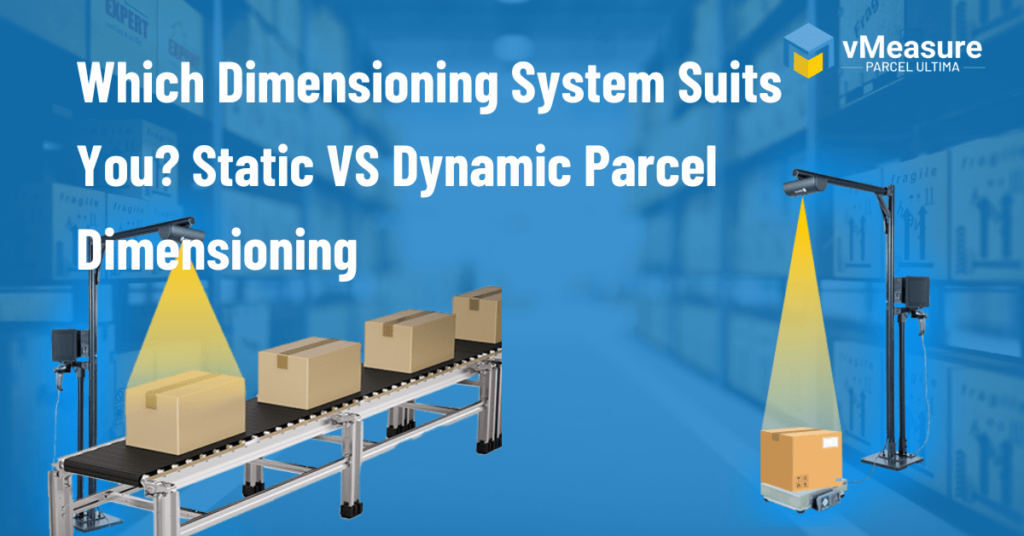Table of Contents
Introduction
The efficient operation of fulfillment centers requires a complex ecology of interconnected operations. Recent developments have forced fulfillment centers to alter their operational strategies to continue operating profitably and completing customer orders on time.
The best method to guarantee your fulfillment centers’ sustainability and endurance is to find solutions to some of the frequent problems. Fulfillment managers must constantly be on their game to address difficulties, including effectively managing laborers, maximizing the use of limited space, and adjusting to seasonal needs and other factors.
Role of dimensional weight scanner in fulfillment centers
In a fast-moving world, delivering products to the customer’s doorstep has become a new norm, but for customers, it also means sticking with the brand. Therefore, several warehouse and fulfillment centers today seek new technologies, like dimensional weight scanners, to maintain lean and agile fulfillment centers by producing accurate parcel dim and weight information.
So, What are some of the ways that dimensional weight scanners can assist fulfillment centers?
With the aid of a dimensional weight scanner, fulfillment centers can rapidly and precisely measure a package’s dimensions to calculate its dimension and the appropriate shipping fee. As a result, clients will be charged correctly for their orders, increasing the efficiency and accuracy of the fulfillment process. Furthermore, by using a dimensional weight scanner, fulfillment centers can prevent overcharging consumers or losing money on undercharged goods.
In addition, below are some areas where the dimensional weight scanner can be installed to assist fulfillment centers:
#1. Improving inventory accuracy
One of the numerous issues at a warehouse and fulfillment centers can be inaccurate inventory management. Although, due to the possibility of workers going to a site where the product is unavailable, picking issues arise, the same can occur while keeping goods in an already-filled space.
Inventory data that is manually updated results in inaccurate stock information, obsolete inventory accumulation, and labor-intensive physical checks and error corrections.
These subpar procedures cost the warehouse money and time. With a dimensional weight scanner integrated with the right inventory management system, we can track and oversee product information and movement without a glitch!
#2. Seamlessly manage room space:
The manager of a fulfillment center may experience difficulties managing inventories due to poorly configured fulfillment. The average capacity utilization for fulfillment centers is only 68%, demonstrating the ineffective use of available space. Right structures can maximize the storage capacity of fulfillment centers by maximizing floor and vertical space.
Errors in fulfillment center setup may also result in needless time spent looking for high-frequency and quickly moving products. In addition, setup inefficiencies directly impact profitability since order fulfillment decreases as a picker’s search time increases. The firms also need to know the package size to make it easier for staff to arrange the products according to product weight and dim to solve the storage space problem. For the fulfillment staff to efficiently manage room space, installing a dimensional weight scanner in the workstation may be more advantageous.
#3. Reduce the reliance on rudimentary and iterative processes:
While digitization is accelerating across many industries, most fulfillment centers and warehouses continue to use antiquated paper-based procedures. As a result, manual data entry, excessive product handling, and passing the same ticket between personnel can all be time- and money-consuming tasks.
Processes for fulfilling orders are made more efficient by using modern technology, such as dimensional weight scanners. Automated systems also operate quickly, carry out duties more effectively, and do away with redundant work.
#4. Adapting to Seasonal Demand:
The warehouses have no control over shifting client demands. Customer demand varies due to seasonal changes, economic cycles, popular products, and other reasons.
The changing customer demand cycle presents warehouses with significant hurdles regarding product fulfillment. Sales may decline in some months, while demand may outpace supply in other months.
Maintaining an equilibrium between supply and demand is crucial for the fulfillment process. Therefore, the warehouse and other elements of the supply chain, particularly procurement and transportation, shouldn’t have any gaps.
Managers of fulfillment centers and warehouses can better adapt to changing customer demands by implementing dimensional weight scanners. As a result, they can adjust product positioning, place early orders for in-demand products, enhance the picking module, and effectively manage their transportation network.
#5. Managing Heaps of Data:
In the course of carrying out various procedures, warehouses might produce ample data. Even though this data can be too big to monitor and evaluate manually, it contains useful information for increasing warehouse productivity and efficiency.
Managing logistics operations, different delivery channels, tracking the movement of goods through the supply chain, and handling returned or damaged goods can be herculean tasks for warehouse managers, particularly in small and medium-sized warehouses with limited resources.
By turning the data into usable intelligence, dimensional weight scanners’ excellent measurement capabilities can aid fulfillment managers in improving visibility into their operations.
#6. Enhance Quality Control:
Quality control can occasionally be neglected due to the daily influx of hundreds of orders. Employees can fail to pay attention to important details during picking, packing, or shipping due to the pressure of quick order completion. Customers can end up with inaccurate, damaged, or inadequately wrapped as a result, and their purchasing experience might be forgettable. Quality control can prevent inadequate customer service and return hassles.
Additionally, a fulfillment center’s quality control could benefit from installing a dimensional weight scanner. The dimensional weight scanner can ensure that a package fits the requirements for delivery and won’t be refused by the carrier by precisely measuring its measurements. As a result of packages being rejected for not matching shipping criteria, this may help to decrease the number of returns and refund requests.
Conclusion
Today’s eCommerce businesses rely on warehouse and fulfillment facilities as their main source of growth and brand recognition. eCommerce companies must, however, keep up with technological advancements that aid fulfillment centers in increasing production if they want to preserve their brand reputation. Given this, implementing a dimensional weight scanner can be a successful option to address a variety of DIM and fulfillment-centric issues.
Is there too much physical labor and insufficient productivity at your fulfillment center? If so, please get in touch with us. Our team of dimensioning experts works with fulfillment centers to understand their issues and challenges and offer robust and tailor-made dimensional weight scanners that are advantageous to them.





